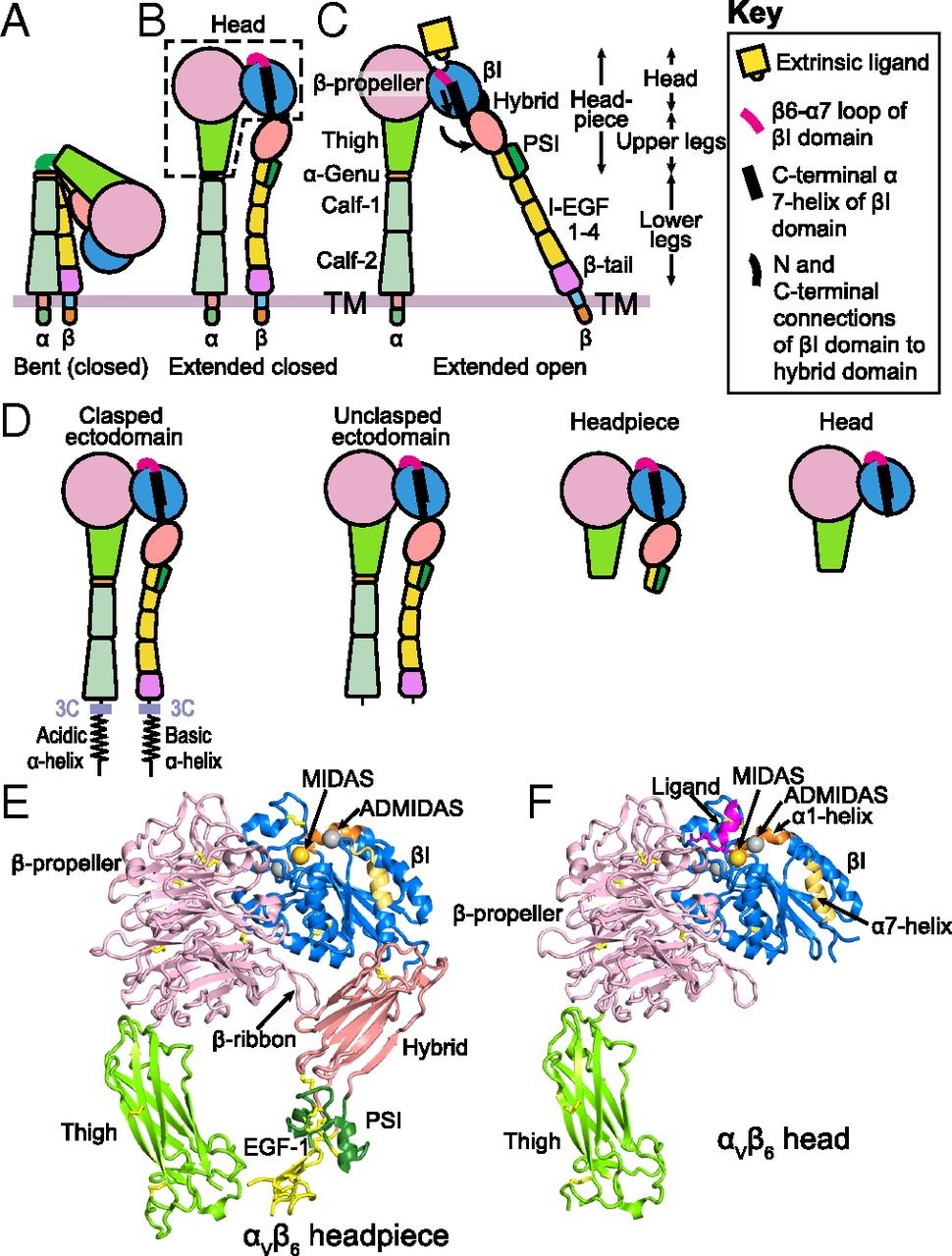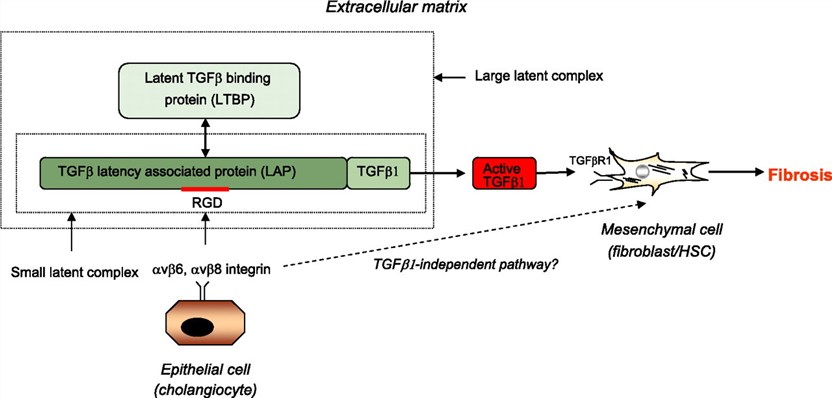NASH Target Development Service for Integrin αvβ6
Integrin αᵥβ6 might be a novel target for the hepatic fibrosis and non-alcoholic steatohepatitis (NASH) treatment since it is a special epithelial transmembrane receptor relevant to multiple fibrosis through mediation the activation of TGF-β1. Creative Biolabs offers a series of scientific research services about integrin αᵥβ6 for the NASH target discovery to global customers.
Introduction to Integrin αvβ6
Integrins are a class of transmembrane cell surface receptors expressed by most cells, which promote cell-cell or cell-extracellular matrix (ECM) attachment. The integrin family consists of two non-covalently associated transmembrane glycoproteins α and β subunits. There are 18 α subunit and 8 β subunit genes in mammalian cells, of which 24 different integrins with different functions and ligands recognition can be formed by their various combinations. Integrin αᵥβ6 is an epithelial-specific integrin that is composed of αᵥ and β6 subunits. Integrin αᵥβ6 is the receptor for several ligands, such as latency-associated peptide, fibronectin, transforming growth factor β1 (TGF-β1) and tenascin. Unlike other integrins, integrin αᵥβ6 is non-existent or poorly expressed in healthy adult epithelial cells, but is upregulated in wound healing, cancer, and certain fibrotic disorders. Integrin αᵥβ6 is an important molecule with many bioactivities such as TGF-β1 activation, modulate invasion, apoptosis inhibition, immune surveillance, etc.
 Fig.1 Schematics of integrins. (Dong, 2018)
Fig.1 Schematics of integrins. (Dong, 2018)
Integrin αvβ6 Inhibition for NASH Treatment
Integrins exert their functions primarily by attaching of the cell to the ECM and thereby activating signal transduction pathways that mediate diverse cellular activities. Abnormal expression of integrins associates with a series of disorders, such as fibrosis, infections, cancers and so forth. As described before, integrin αvβ6 can’t be detected in normal adult liver. Therefore, upregulation or overexpression of integrin αvβ6 in the liver may be an indicator of hepatic fibrosis. The expression of integrin αvβ6 was markedly increased not only in mouse fibrosis but also in human hepatitis fibrosis, cirrhosis, and other liver injuries. Studies suggested that integrin αvβ6 is a promising pharmacological target of liver fibrosis, which probably was implicated in integrin αvβ6-mediated activation of TGF-β1.
β6-blocking antibodies, anti-integrin αvβ6 antibodies, and integrin antagonists can suppress αvβ6-mediated TGF-β1 activation, which presents protective and anti-fibrogenic effects on liver fibrosis. And integrin αvβ6 inhibition by these antibodies or antagonists is a potential hepatic fibrosis as well as NASH therapeutic strategy.
 Fig.2 Integrin αvβ6 as an indirect mediator of liver fibrosis progression. (Patsenker, 2011)
Fig.2 Integrin αvβ6 as an indirect mediator of liver fibrosis progression. (Patsenker, 2011)
In terms of NASH target discovery and therapeutic strategies development, Creative Biolabs has established specialized scientist teams and comprehensive platforms (e.g. Hit to Lead, Lead Optimization, IND-Enabling, Target Identification, and Validation, Hit identification) to provide first-in-class services, which include but not limited to:
- Biomarkers for NASH Diagnosis
- Target Discovery and Therapeutic Strategies
- Preclinical Models of NASH
Just feel free to contact us for more detailed communications and information. Our scientists can tailor NASH treatment services according to your needs.
References
- Dong, X.C; et al. High integrin αvβ6 affinity reached by hybrid domain deletion slows ligand-binding on-rate. Proceedings of the National Academy of Sciences of the United States of America. 2018, 115(7): E1429-E1436.
- Patsenker, E.; Stickel, F. Role of integrins in fibrosing liver diseases. American Journal of Physiology-Gastrointestinal and Liver Physiology. 2011, 301(3): G425-G434.
 For Research Use Only.
For Research Use Only.